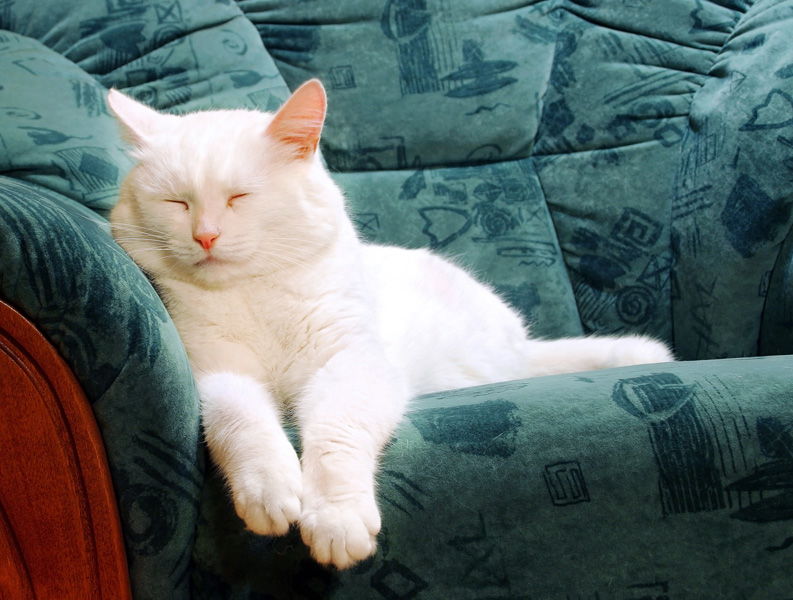


We all know that cats like to sleep a lot, but there are conflicting reports about the time of day when they are most active. Some scientists say they are most active at night, others in the day-time, and yet others say they are most active at twilight (i.e. crepuscular). Could it be that they are all right – depending on the cat and how it is kept?
Many studies of cats are actually on laboratory cats. So Giuseppe Piccione and colleagues at the University of Messina, in Italy, decided to study the behaviour of cats in homes, and see how they varied.
Ten pet cats took part in the study. They were divided into two groups. Group A lived in a relatively small house, with access to a small garden between 8 and 9am. Group B, in contrast, lived in a large house with a very large garden to which they had continual access, and were shut out of the house overnight.
The owners of all ten cats followed the same daily pattern: they left for work at 9.30am, came back at 1.30 in the afternoon, left again at 3.30 and returned at 8pm. The cats had free access to water. All of the cats were fed dry food at 8am, and at 9pm the Group B cats got dry food whereas the Group A cats got wet food. The study took place in summer, when the sun rises in Messina, Italy, at 5am and sets at 9pm.
All of the cats wore a special recording device on their collar for ten days, to measure their activity levels. The scientists calculated how active each cat was overall, and how active they were at night vs how active they were during the day.
The results showed that the cats in Group A were most active during daylight hours. On the other hand the cats in Group B, that were shut outside overnight, were most active during the night time. In Group B, there was a daily rhythm to their activity levels, which didn’t exist for Group A. However, in Group A, the cats were most active when the owners were at home and interacting with them.
The scientists say these results show a “high influence of human presence and care on the amount of activity in cats.” We know that some other domestic animals (such as dogs) adapt their activity levels according to how they are kept, but this is the first time it has been shown for cats in the home. So the time of day when they are most active is not hard-wired genetically, but varies according to their lifestyle.
There were relatively few cats in this study. While this is typical of the field, it would be nice to see higher numbers of participants in this kind of research. Future studies could investigate a wider range of housing situations. It would be interesting to see if cats change their habits if their owner’s lifestyle changes, but of course this would be hard to study in a real-life situation.
We are used to thinking of cats as their own creatures, but this research shows they adapt their lifestyle according to that of their owner and the place where they live.
What is your cat’s daily routine?
Reference
Piccione, G.,, Marafioti, S.,, Giannetto, C.,, Panzera, M.,, & Fazio, F. (2013). Daily rhythm of total activity pattern in domestic cats (Felis silvestris catus) maintained in two different housing conditions Journal of Veterinary Behavior, 8 (4), 189-194 DOI: 10.1016/j.jveb.2012.09.004

0 komentar:
Posting Komentar